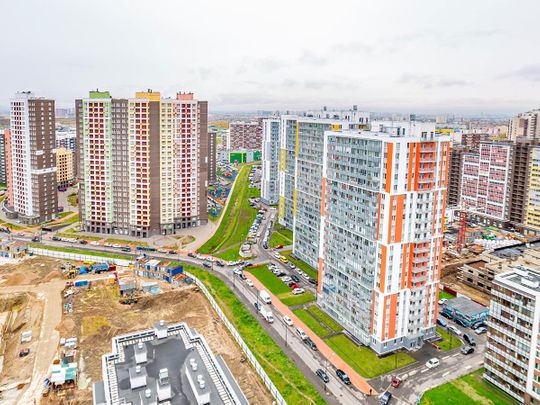
Dubai: Sponsored holidays? Gift vouchers? Easy payment plans and stamp duty waiver?
Expat Indians in the UAE take note – these could be the incentives headed your way once flights from India resume and Indian developers find a seat on them. Because after India’s second wave of the COVID-19, the property market could do with all the help it can get. This is where NRIs can help.
“There is no denying that property prices have remained stagnant for quite some time,” said Niranjan Hiranandani, President of NAREDCO, a grouping of Indian developers, and also one of the big developers in Mumbai. “The rupee depreciation is an opportunity – Indian property will prove a worthwhile investment in the coming years.”
To get potential buyers interested, “Indian developers can offer some add-on benefits like partial stamp duty and registration fee waiver, assured rental, a zero pre-EMI scheme, zero GST (Goods & Service Tax) and flexi payment plans.”
Plus, thrown in those sponsored holiday trip offers and gift vouchers.

Stamp-duty waiver had acted as a growth catalyst stirring pent up demand that was muted in wake of Covid crisis. The industry has appealed to the Maharashtra government to reconsider the extension of stamp duty waiver. The state witnessed renewed interest from domestic and NRI investors and led to record-breaking property registrations
Need some help
What is clear is that India’s property market will need some more help to get back the momentum it lost after the second wave hit the country. (Now, even with vaccinations picking up pace, the other big worry remains the spread of the even more lethal Delta variant of the virus.)
The Indian government as well as individual states had brought in relief measures in the weeks after the first wave eased, and property buying picked up almost as soon as last year’s lockdown phase ended. The likes of Maharashtra had brought down stamp duty charges as a temporary measure – and which paid off spectacularly. The Mumbai property market had one of its best sales performance in recent years – until the second wave hit.
Can governments again come to the rescue? Can the central government offer more relief for developers, whether it is on GST or more direct funding?
But some of the states that had offered stamp duty waiver has rolled back those offer. Which means it is now up to the developers to do their bit and convince buyers, especially among NRIs.
“Just when we were seeing significant quarter-on-quarter jump in housing sales came the second wave, which is far more excruciating than the first,” said Shajai Jacob, CEO of Anarock, the property consultancy. “The only silver lining is the fact that developers are far better prepared now than last year. “Moreover, unlike last year the governments that were imposing state-level restrictions allowed construction activities to continue.
“Things will return to normalcy once the vaccination drive that has now been opened to the 18-year plus population gains some momentum, and the panic around crumbling health infrastructure starts to settle down. The second wave is not expected to end the good run that we saw in the recent months, but will be a blip that would last for two- to three months.”
"In an interesting twist to the post-COVID-19 real estate story, NRIs were once again scouting for homes in India, with most eyeing luxury properties," said Shajai Jacob of Anarock. "The depreciating rupee coupled with developer discounts and offers were a major attraction.
"This was further validated by our consumer survey, wherein at least 73% NRIs showed preference for properties priced between 9 million rupees to 25 million rupees. In the pre-COVID survey, just 41% preferred properties within this price bracket – the most favoured were affordable and mid-segment homes.
"With the second wave and the subsequent lockdowns being announced across different cities and states, we see some slowdown in demand. That said, NRIs mostly prefer branded developers (at least 86% as per the survey) and there is no denying that they are far better prepared today than they were back in 2020."
Action at the top
Himmat Singh, owner of Himmat & Rohini Singh, a brokerage firm that is an affiliate of Christie’s International Real Estate, is another who believes strongly that all it takes for a second shot at revival was for the lockdown restrictions to end. Singh also points to what happened last year to emphasise that fact.

Singh specialises in super-luxury homes in the Delhi area, which also explains the Christie’s alliance. Apart from Mumbai and Bengaluru, Delhi emerged as a strong market for property sales – despite developers carrying heavy inventory in belts such as the NCR.
'Circle rate' slash
Here too incentives played a part. Each neighbourhood in Delhi falls into a category ranging from Category A to Category H. In February, the state government brought ain temporary reduction of 20 per cent in ‘circle rates’ for all neighbourhoods. This is valid until September 30, 2021.
“This move was done primarily because the state government is facing a severe cash crunch and it was felt this reduction will result in more transactions,” said Singh. “Consequently, the government would earn revenue from collection of stamp duty and registration charges on these transactions.
“We welcome a reduction in circle rates because we feel it is governmental overreach for the authorities to dictate the price at which arm’s length transactions should take place. But bear in mind that circle rates have been increased by the government at every revision for the last 20 years.
"This (first) rebound is not attributed to developer incentives, or regulatory changes such as stamp duty or circle rates. We would say it was more to do with buyers wanting stability post the uncertainty of the pandemic. High networth buyers have had the liquidity to purchase for a while - but many were sitting on the fence trying to time the market or were just not in that much of a hurry to purchase. The pandemic seems to have jolted many of these buyers into pulling the trigger."
Whatever be the trigger cause, India's developers will need to find some formula to work out a second revival for the real estate market in 12 months.All-expenses paid holiday trips and gift vouchers for likely buyers too would help.
The stamp duty benefit was offered largely in Maharashtra, Delhi and Karnataka (for affordable housing). But the limited-period stamp duty cut in Maharashtra expired on March 31 and this factor along with the second wave of the COVID-19 impacted housing sales.








